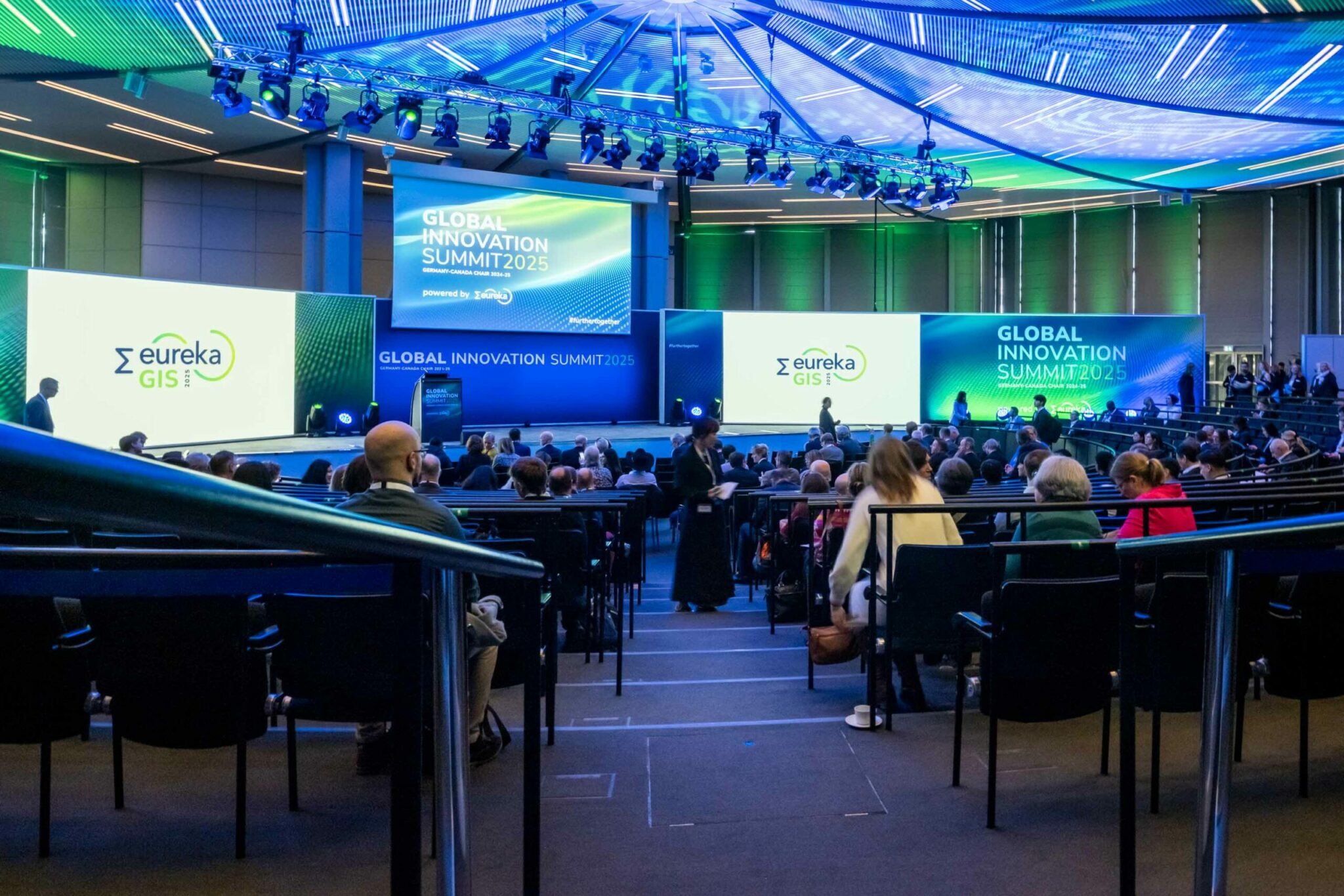Resources
We’ve answered questions about the second Innowwide call for market feasibility projects submitted to the helpdesk and/or asked during webinars. Repeated questions have been grouped.
Disclaimer: These FAQs are for reference purposes only and do not have legal value in themselves. Please consult the Innowwide implementing guidelines.
4.2 million euro to fund 70 market feasibility projects.
We expect to receive between 500 and 600 applications.
You may only submit one application per call for projects.
No. Your market feasibility project can only target one pilot market (country) where you intend to develop and validate your innovative business solution with a local counterpart.
However, as part of your application, you should indicate if you intend to continue exporting your innovation beyond the initial target market, describe how you plan to do this and state the timeframe.
Yes, but you must apply with a different project and targeting a different country.
This call for projects has no thematic or industry focus. Innovative SMEs from any sector can apply.
Foundations can apply only if they are an SME according to the European Union definition, which considers:
You must confirm your status as eligible to receive Innowwide funding.
You can participate in Innowwide with an innovative product concept or a solution you have already developed and commercialised (in your home market).
Your Innowwide market feasibility project can be the start of a future international R&D and innovation project you intend to carry out (in the short or medium term) with local counterparts in your target country. This future project may be for developing, improving or researching new applications for your innovative solution (product, process or service), including frugal innovation.
To be eligible, your application must include at least three eligible activities from sections 1, 2 and 3 (market and technical activities) and may include eligible activities from sections 4 and 5 (business development and promotion).
If you select all eligible activities listed, your six-month project plan may seem unrealistic to evaluators.
Whilst you can complete your application form in any order, we recommend you complete the sections in the order they appear in, from left to right:
Bear in mind you cannot invite your counterpart until you have completed the project description. Or that in the “quality and efficiency of the implementation section”, you must budget for activities based on those previously selected in the “excellence” section.
You can save your draft application and return to it as often as you wish before the call deadline.
In the editable workplan, you can edit the titles of work packages and activities or add other activities that are relevant to your project. However, in the budget section of the application form, you can only select from a dropdown menu containing the eligible activities listed in the guidelines.
Therefore, we recommend using the same or similar wording in the workplan for activities that will be budgeted to ease the evaluation process.
Previous participation in another Eureka programme is not a condition for applying to Innowwide, but your Innowwide project can complement another Eureka programme project and vice versa.
For example, your Innowwide project may come after completing an R&D project to help you discover whether the output or your company’s innovative solution could be commercialised in a selected target market. That previous R&D project could have been financed by any funding programme or by your own means.
No
There is no minimum or maximum technology readiness level for this call. However, your innovative solution should be at least at technology readiness level 4 (i.e., it has been validated in a laboratory environment) in your home country.
If you expect to carry out further R&D activities after your Innowwide project, your innovative solution should be at technology readiness level 7 or lower. If your innovative solution is already in your home market and only needs small changes to adapt to the pilot market, its technology readiness level can be higher.
In the impact section of your application, you must describe how your innovative solution is relevant to your target market in terms of sales, societal, environmental, ethical and gender relevance (in particular, in relation to Sustainable Development Goals).
Independent experts will consider this when evaluating the impact of your project.
Innowwide projects (and results) cannot be for military use.
Innowwide only fund projects with an exclusively civilian purpose. This does not exclude project results that could meet the needs of both civilian and military end-users (known as “dual-use” goods or technologies), provided the project has a clear focus on civilian applications.
Yes, you can download a template for your workplan from the implementation section of your online project application form. You must use this template. Applications that do not, will be discarded.
Startups can apply to this call for projects. You may be asked to provide a two-year business plan.
Your final report includes:
We will provide you with a final report template before the end of your market feasibility project.
Companies exempt from VAT can still apply to Innowwide. You must indicate your VAT exemption status and be able to provide proof of VAT exemption upon request.
A NACE code is the statistical classification of economic activities in the European Union and some other countries. Other non-EU companies have an equivalent code, e.g., ISIC (International Standard Industrial Classification). A company usually has several NACE codes (or equivalent) if it engages in multiple types of economic activities.
These codes are assigned to companies when registering or updating their registration details to reflect changes in their economic activities.
You can find your company’s NACE code(s) in your national registration documents.
No
A participant identification code (PIC) number is a nine-digit number that serves as a unique identifier for legal entities applying to and participating in European funding programmes. A PIC number has no expiry date.
Only the applicant SME must provide a PIC number. Subcontractors do not need to provide a PIC number.
To find out if your organisation already has a PIC number or to register for one, refer to the EU Participant Register page. Your organisation’s PIC number will be given when you have completed the registration, which takes 5-10 minutes.
Eureka is not responsible for the EU Funding and Tenders registration portal and does not have control over its functionality. Any inquiries should be directed to the EU Funding and Tenders portal IT Helpdesk.
Note that having a PIC number is essential for completing your application. Applicants are accountable for ensuring timely PIC requests.
You must have one local counterpart (main subcontractor) based in your target country.
You are allowed to use other minor subcontractors in your target country or in a different country (including in EU or Horizon Europe Associated Countries). These subcontractors must be justified and can only conduct minor tasks (e.g., publishing, preparing promotional material, supporting participation in trade fairs, supporting matchmaking, clerical support, etc.).
Subcontracting costs cannot be 0. Cooperation with a main subcontractor is an important part of your market feasibility project, so you must allocate a reasonable budget to your subcontractor.
As subcontracting costs vary from country to country, you can decide how much you want to dedicate to subcontracting.
You can incur costs in both your target country and home country.
However, you must provide a contract with your main subcontractor in your target country for an amount of above zero euro. You must also maintain regular bookkeeping practices to be ready for any checks, reviews, audits or investigations.
Subsidiaries/affiliated companies and parent firms can be a main subcontractor if they:
Subcontractors can be any type of legal entity organisation.
A purpose of Innowwide is for you to create a long-term partnership with your counterpart in your target country (initially your main subcontractor in your market feasibility project). You must choose your main subcontractor considering their capabilities (e.g. legal, technical, market analysis) to accomplish your eligible activities, but also to continue a future collaboration.
Finding a counterpart can be time consuming. Please take this into account before starting your application for this call for projects (deadline 15 October 2024).
We have provided a (non-exhaustive) list of organisations that can help you find a relevant partner.
When contacting these organisations, please state information about your company (type of company, sector, previous experience in international collaboration, etc.), the type of partnership you need (cooperation description, type of partner sought, country, etc.) and your contact information.
If the contracted services contribute directly to the project’s implementation, where a specific project task is partially or totally outsourced to the subcontractor, it falls within the “subcontracting” category costs. This does not include indirect costs for the beneficiary.
If the contracted service supports the completion of tasks without directly implementing defined tasks, it falls within “other goods, works and services”.
Successful market feasibility projects receive a fixed grant of up to 60,000 euro.
The maximum funding covers up to 70% of minimum project eligible costs (personnel, subcontracting, purchasing costs, travel and subsistence, equipment depreciation and other goods, works and services) of 86,000 euro. This means that if selected for funding, you must cover at least 26,000 euro of the project costs.
There are no specific requirements or recommendations for your maximum project budget.
For reference, the median total budget among the projects selected for funding in Call 2 (2023) was around 89,000 euro.
Subcontracting costs must be above zero euro. Cooperation with a main subcontractor in the target country is an important part of your market feasibility project, so you must allocate a reasonable amount of the total project budget to your subcontractor.
For minor subcontractors, expenses may not exceed 20% of the total subcontracting costs.
Additionally, we recommend ensuring that task descriptions and assigned resources are consistent, as this is considered when your application is evaluated.
No. You must only state the budget for the applicant (beneficiary) SME. Subcontracting costs (for the local counterpart in your target country) are listed in a budget category within the overall budget.
Innowwide is funded by Horizon Europe and exempt from European Union De Minimis rules.
The cost estimations for personnel or other categories must approximate your actual costs, align with your normal practices and be reasonable/not excessive and necessary for your activities.
Yes. When a funding decision has been made and a grant agreement has been signed, your market feasibility project can begin.
We intend to communicate evaluation results in the first quarter of 2025.
We expect grant agreements to be signed towards March 2025 (five months after the call for projects deadline).
The beneficiary SME is responsible for allocating work to and paying the subcontractor. You should define a payment method in the contract you sign with your subcontractor.
The ‘double funding rule’ applies. This prevents you from receiving funding from more than one European Union programme for the same activities and expenses. Activities in your Innowwide market feasibility project cannot be funded by any other EU funding programme.
Innowwide reviews the outcome of your receiving the 60,000 euro lump sum. The payment of the grant is linked to approval of your work packages and deliverables rather than eligible costs.
If your project is carried out properly and your final report is approved, you do not need to report actual costs and resources such as timesheets, pay-slips or invoices (the grant will be paid regardless of the costs actually incurred).
However, you need to follow regular bookkeeping practices. The beneficiary SME must have specific financial accounts and report the execution and results of your market feasibility project.
Purchases and subcontracting costs must be made considering best value for money and must be free of any conflict of interest.
At any moment, the Eureka Association (or the European Anti-Fraud Office, the European Court of Auditors, etc.) reserves the right to carry out checks, reviews, audits or investigations.
Although the aim of your market feasibility project is to determine whether your product-, process- or service-market combination can be commercialised in your target market, you are not obliged to commercialise it after your project ends.
Got an innovative idea? Explore our funding opportunities designed to support groundbreaking projects and help turn your vision into reality.
Secure the resources you need to bring your ideas to life.
See all open callsFind out more


